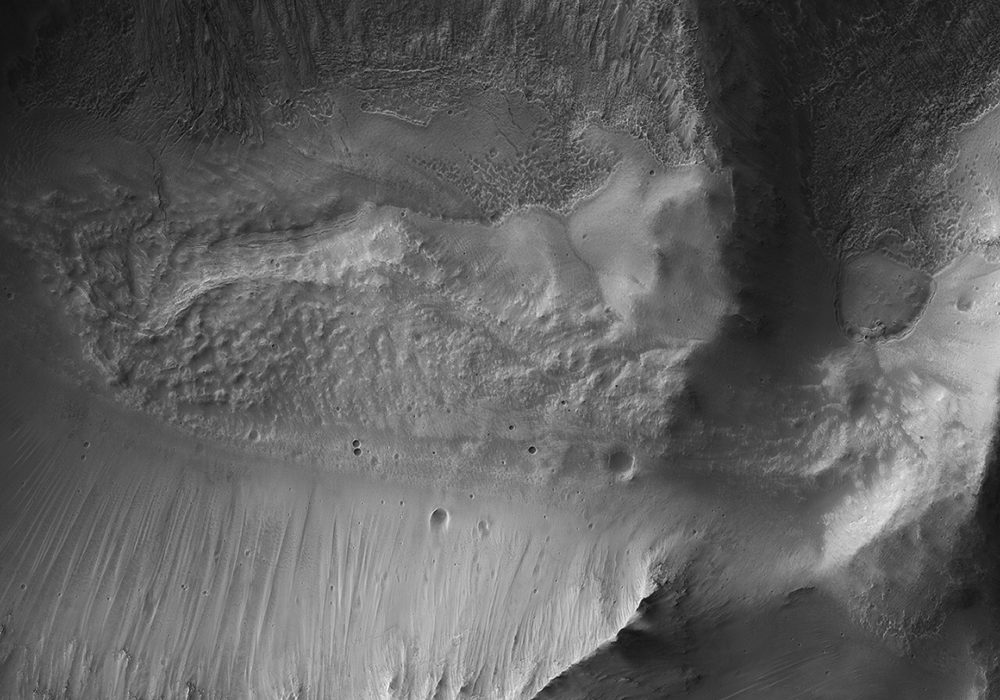The eastern rim of this small 3.5-kilometer crater appears to have collapsed into a much larger crater (about 14-kilometers wide). The larger crater has a large ice flow around its central peak, and is non-circular, with large blocks further suggesting structural collapse of the terrain due to what are called periglacial processes.
Understanding the composition of this small crater may inform us of the ice content of the surrounding terrain.
Written by: HiRISE Science Team (27 November 2017)
More info and image formats at http://hirise.lpl.arizona.edu/ESP_049999_1450
Image: NASA/JPL/University of Arizona
